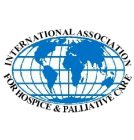Regional Report from Saudi Arabia
Stand-alone palliative care facilities: a cultural viewpoint
While visiting a hospice in Cyprus nine years ago, I was surprised to learn that their hospices had provided care to terminally ill Cypriots for several decades and yet they were still stigmatized as being “death homes” to which many families hesitate to admit a relative. Since then, I have been skeptical about the appropriateness of establishing a stand-alone palliative care facility in our region. Notwithstanding the cultural variations, cultural similarities need not be overlooked. Although more nuclear families are being seen nowadays, the extended family model remains a social norm in the Arab world. In such extended families, it is usually considered the social duty of the family to look after a terminally ill relative.
While many tertiary hospitals exist in the Arab world, hospices, nursing homes and day care centers are either nonexistent or extremely rare in most of Arab countries. This style of healthcare structure may have been shaped by several factors including the cultural background of the community. In Saudi Arabia, for instance, the very few geriatric care facilities that do exist are commonly viewed by the community as homes for abandoned elderly. Families who negatively view geriatric care facilities find no cultural difficulty in admitting an elderly relative to a tertiary hospital equipped with “sophisticated” modalities that “rescue” patients’ lives. In other words, hospitals are probably viewed positively because of the hoped-for outcome expected from them (namely, improved health), while geriatric care (or palliative care) facilities are viewed negatively because of the feared outcome associated with them (namely, death).
It should not be a surprise if a community in an Arab country labels a stand-alone palliative care center soon after its inauguration as a “death center.” This is likely to create a major obstacle to appropriate utilization of such a facility by the served community. These concerns associated with establishing stand-alone palliative care facilities in the Arab world may not be founded on a solid base of evidence. However, the luxurious trial-and-error method may not be the wisest approach when failure may entail a rebound resistance to the concept of palliative care in a region known for late diagnoses of cancer and extremely scarce palliative care programs.
Mohammad Zafir Al-Shahri, MD
Consultant, Palliative Medicine
Director, Palliative Medicine Fellowship Program
King Faisal Specialist Hospital && Research Center
Riyadh, Saudi Arabia
Dr. Mohammad Zafir Al-Shahri recently completed his term as an IAHPC board member; we extend our most sincere gratitude for his continued support.
|

